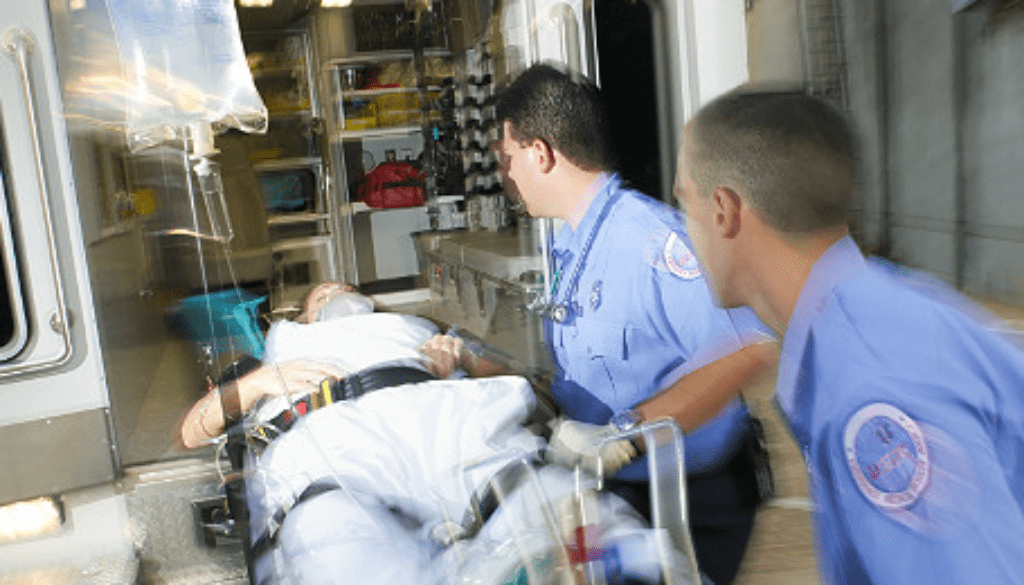The Unfolding Reality of First Responder PTSD After Natural Disasters
Post-Traumatic Stress Disorder (PTSD) is a mental health condition triggered by experiencing or witnessing a traumatic event. Anybody can suffer PTSD following a natural disaster, but an alarming statistic has emerged relating to first responder PTSD after natural disasters.
In April 2018, the Ruderman Family Foundation published a whitepaper highlighting the mental health issues and high rate of suicides experienced by first responders. The publication notes first responders have “front row seats to the horrendous aftermath of natural disasters” yet, due to the perceived shame and stigma of accessing mental health services, relatively few seek professional help for PTSD.
Often, the tragic result of a mental illness that goes untreated is suicide, and the white paper reports that more police officers and firefighters take their own lives than die in the line of duty. Due to the nature of their deaths, few families discuss the loss of their loved ones – contributing to a lack of awareness around the issue of first responder PTSD after natural disasters.
The Causes of First Responder PTSD after Natural Disasters
The rate of first responder PTSD after man-made disasters (such as the 9/11 attack on the World Trade Center) and civilian PTSD after natural disasters (such as Katrina) has recently received a greater amount of attention; but not so much is heard about first responder PTSD after natural disasters – such as last year’s devastating wildfires in California.
With regard to post-wildfire PTSD, one of the reasons for this condition receiving little attention is that there are two types of firefighting first responders – urban firefighters who generally tackle structure fires, and wildland firefighters who work seasonally. Typically urban firefighters have year-round work, health insurance, and mandatory trauma training.
Comparatively, wildland firefighters get very little in the way of support despite suffering the same trauma of physical destruction and the same survivor´s guilt when one of their crew dies. According to Lisa Johnson – a counselor at the Wildland Firefighter Foundation – things can be even harder for wildland firefighters when fire season ends and they lose a team, a paycheck, and the purposeful adrenaline rush of “being on the line”.
How the Symptoms of First Responder PTSD Manifest
No common pattern exists for how the symptoms of first responder PTSD manifest. Each individual has their own responses to traumatic events depending on how their brain regulates the chemicals released in response to a stressful situation, previous life experiences, and inherited mental health issues such as a propensity to anxiety or depression. However most PTSD suffers experience one or more of the following symptoms:
Intrusive Memories
Also called “re-experiencing” symptoms, intrusive memories can be caused by the individual’s own thoughts, or triggered by words, objects or situations that are reminders of the traumatic event. Intrusive memories include:
- Recurring memories of, or dreams about, the traumatic event.
- Reliving the event while awake as if it were happening again.
- Severe emotional distress or physical reactions to a reminder of the event.
Avoidance Symptoms
To avoid intrusive memories and things that remind them of the event, an individual may change their routine, develop negative tendencies, or block out all memories to avoid recalling details of the traumatic event. These symptoms manifest as
- Avoiding places, objects, activities or people that remind them of the event.
- An increased in negative feelings about themselves or others.
- The inability to express positive or negative emotions.
- A loss of interest in activities that were enjoyable in the past.
- Feelings of guilt, hopelessness, depression or worry,
- Memory problems and difficulties maintaining relationships.
Hyper-Arousal Symptoms
Hyper-arousal symptoms are excessive reactions to events an individual would previously have coped with rationally and calmly. They can occur consciously or sub-consciously and include:
- Irritability, angry outbursts or non-characteristic aggressive behavior
- Difficulty sleeping or concentrating while awake.
- Being on constant guard for danger.
- Being easily startled or frightened.
To block out the symptoms of first responder PTSD after natural disasters, many victims use negative coping mechanisms such as alcohol or substance abuse – similar to soldiers returning from the Vietnam War. Indeed, the highest percentage of first responders suffering PTSD occurs among wildland firefighters who – like Vietnam veterans – can find reentering family life as stressful as the traumatic events they have witnessed.
Where First Responders and their Families Can Seek Help
It’s hard to quantify both completed and attempted suicide rates in populations that aren’t prone to talk about mental health, but despite limited awareness about first responder PTDSD after natural disasters, there are several organizations first responders and their families can approach to seek help.
The Code Green Campaign—founded in March of 2014 by a group of EMS professionals after they became aware of the high rate of PTSD and suicide among first responders—has an excellent resources page, and invites first responders and their families to share their own stories anonymously.
The PTSD Foundation of America is a faith-based, non-profit organization providing an online PTSD assessment for first responders and group-based support services, while American Addiction Centers is particularly sensitive to the stigma of mental illness in the US and how it affects first responders, and advocates for preventative behavioral health services in all branches of the emergency services.
State and local governments can also do their part towards preventing first responder PTSD after natural disasters (and in all other circumstances) by implementing systems that better prepare first responders for the situations they will encounter and mitigate the traumatic experience.





